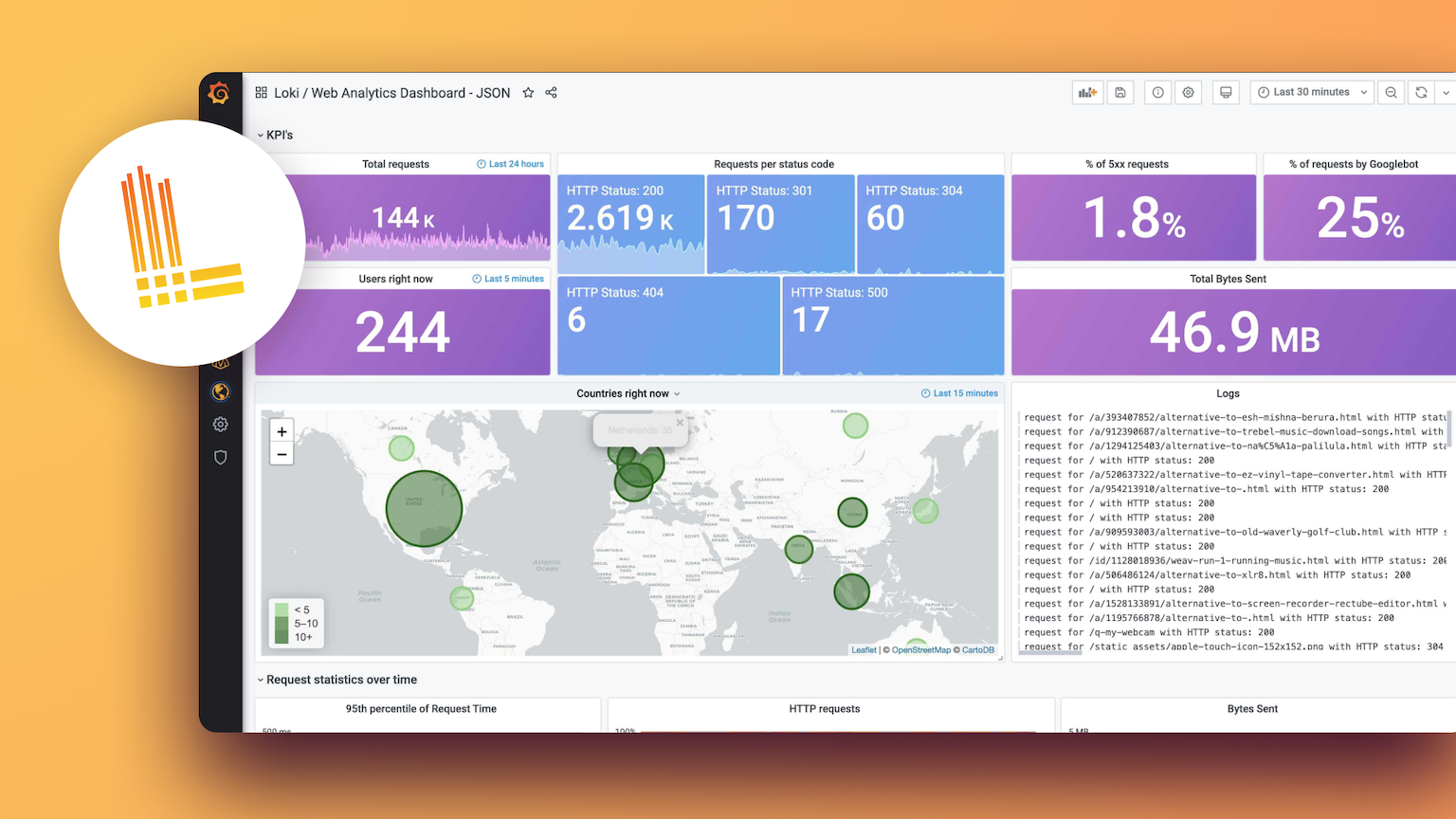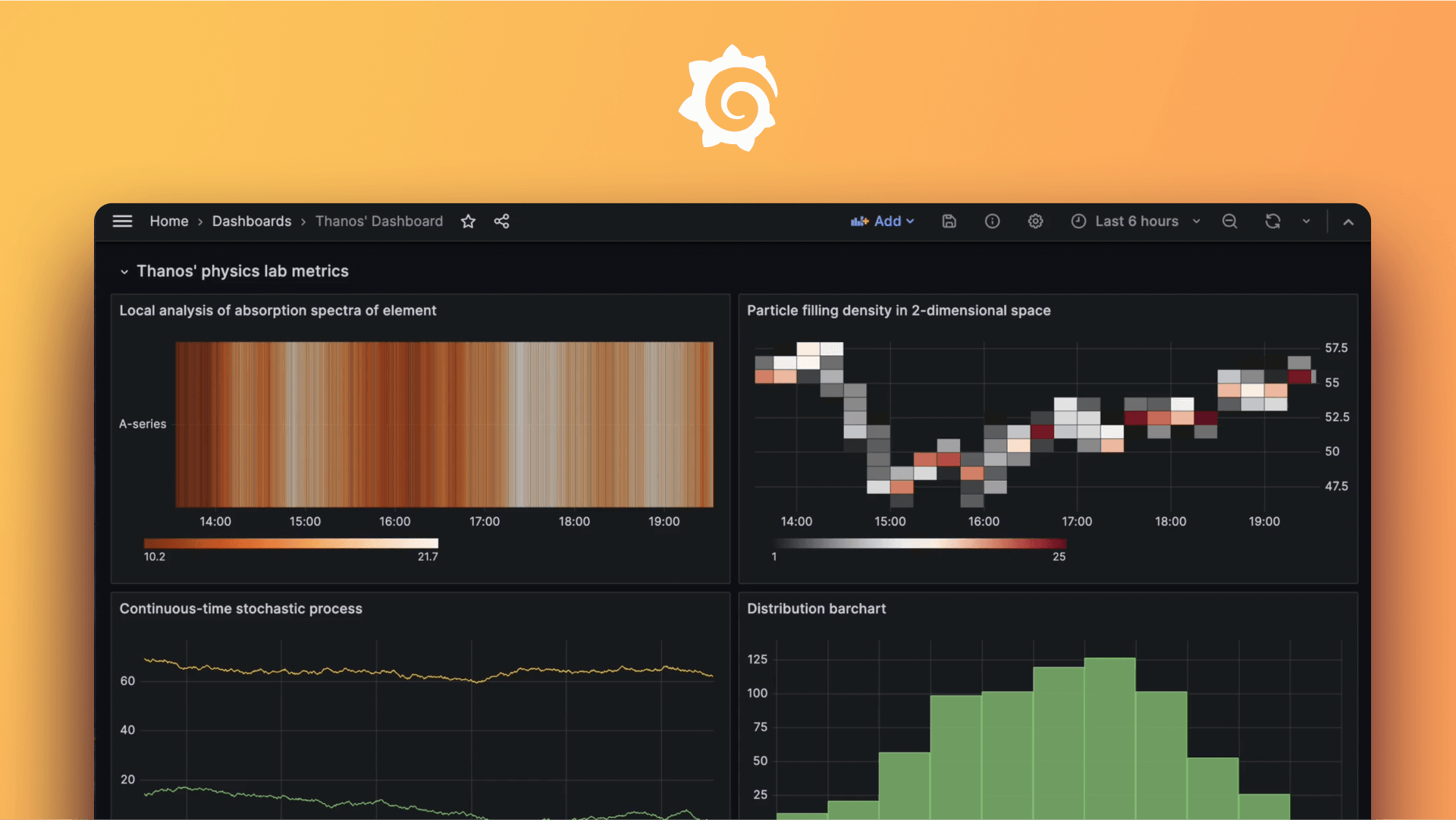Plugins 〉Solr
Solr
Solr Datasource for Grafana
This plugin for Grafana provides an advanced datasource for querying Solr server >= 4. This datasource also provides support for the Solr version bundled with Cloudera CDH 5.X.
This project is open source pursuant to the Apache License, Version 2.0. It is copyright (C) 2018 by PUE Team.
Installation
The easiest way to install this plugin is to clone or unzip this repository on the grafana plugins folder. For example:
cd /var/lib/grafana/plugins
git clone https://github.com/pueteam/datasource-plugin-solr
Then restart grafana to reload the plugins folder.
Configuration
Add a new datasource and choose "Solr" as the type.
Fill in the "Url" and other server parameters. If you run Solr in a kerberized cluster, you'll need LDAP authentication enabled, and provide the credentials here.
Optionally, add the collection to use. This is required if you plan to use templates.
Click "Test Connection" to verify that you entered the information correctly.
Cick "Save".
Queries
First, select the query type. You can choose between standard and group. The standard query is the default.
Standard Queries: The
standardqueries will execute regular queries against Solr. You'll need to fill theCollection, theTimestampfield, theFieldslist (space or comma separated) and theQueryin the Solr format*:*.Group Queries: The
grouptype allows you to group results byGroup By Fieldparameter. You'll also need to fill theGroup Value Fieldand this parameter should be numeric. You can also limit theMax Group Rowsresults.
Template Support
This plugin supports Templates/Variables to be used, for example, in the Query parameter. You'll need to specify the Collection parameter in the Datasource parameters.
CR:$CR AND city:$city
Autocompletion Support
This plugin supports auto completion for the Query Parameters.
Annotation Support
This plugin also supports Annotations. You'll need to provide:
- Collection
- Query
- Tags
- Title
- Text
- Time
Development
To compile, run the following commands:
npm install
grunt
To install in your Grafana server locally, either point Grafana at the repository directory by
editing grafana.ini to contain:
[plugin.solr]
path = /path/to/some/directory/datasource-plugin-solr
Or symlink the repository directory into the Grafana server's plugin directory:
cd /path/to/grafana/data/plugins
ln -s /path/to/some/directory/datasource-plugin-solr .
Then restart the Grafana server.
Contributors
- Sergio Rodriguez de Guzman
Grafana Cloud Free
- Free tier: Limited to 3 users
- Paid plans: $55 / user / month above included usage
- Access to all Enterprise Plugins
- Fully managed service (not available to self-manage)
Self-hosted Grafana Enterprise
- Access to all Enterprise plugins
- All Grafana Enterprise features
- Self-manage on your own infrastructure
Grafana Cloud Free
- Free tier: Limited to 3 users
- Paid plans: $55 / user / month above included usage
- Access to all Enterprise Plugins
- Fully managed service (not available to self-manage)
Self-hosted Grafana Enterprise
- Access to all Enterprise plugins
- All Grafana Enterprise features
- Self-manage on your own infrastructure
Grafana Cloud Free
- Free tier: Limited to 3 users
- Paid plans: $55 / user / month above included usage
- Access to all Enterprise Plugins
- Fully managed service (not available to self-manage)
Self-hosted Grafana Enterprise
- Access to all Enterprise plugins
- All Grafana Enterprise features
- Self-manage on your own infrastructure
Grafana Cloud Free
- Free tier: Limited to 3 users
- Paid plans: $55 / user / month above included usage
- Access to all Enterprise Plugins
- Fully managed service (not available to self-manage)
Self-hosted Grafana Enterprise
- Access to all Enterprise plugins
- All Grafana Enterprise features
- Self-manage on your own infrastructure
Grafana Cloud Free
- Free tier: Limited to 3 users
- Paid plans: $55 / user / month above included usage
- Access to all Enterprise Plugins
- Fully managed service (not available to self-manage)
Self-hosted Grafana Enterprise
- Access to all Enterprise plugins
- All Grafana Enterprise features
- Self-manage on your own infrastructure
Installing Solr on Grafana Cloud:
Installing plugins on a Grafana Cloud instance is a one-click install; same with updates. Cool, right?
Note that it could take up to 1 minute to see the plugin show up in your Grafana.
Installing plugins on a Grafana Cloud instance is a one-click install; same with updates. Cool, right?
Note that it could take up to 1 minute to see the plugin show up in your Grafana.
Installing plugins on a Grafana Cloud instance is a one-click install; same with updates. Cool, right?
Note that it could take up to 1 minute to see the plugin show up in your Grafana.
Installing plugins on a Grafana Cloud instance is a one-click install; same with updates. Cool, right?
Note that it could take up to 1 minute to see the plugin show up in your Grafana.
Installing plugins on a Grafana Cloud instance is a one-click install; same with updates. Cool, right?
Note that it could take up to 1 minute to see the plugin show up in your Grafana.
Installing plugins on a Grafana Cloud instance is a one-click install; same with updates. Cool, right?
Note that it could take up to 1 minute to see the plugin show up in your Grafana.
Installing plugins on a Grafana Cloud instance is a one-click install; same with updates. Cool, right?
Note that it could take up to 1 minute to see the plugin show up in your Grafana.
For more information, visit the docs on plugin installation.
Installing on a local Grafana:
For local instances, plugins are installed and updated via a simple CLI command. Plugins are not updated automatically, however you will be notified when updates are available right within your Grafana.
1. Install the Data Source
Use the grafana-cli tool to install Solr from the commandline:
grafana-cli plugins install The plugin will be installed into your grafana plugins directory; the default is /var/lib/grafana/plugins. More information on the cli tool.
Alternatively, you can manually download the .zip file for your architecture below and unpack it into your grafana plugins directory.
Alternatively, you can manually download the .zip file and unpack it into your grafana plugins directory.
2. Configure the Data Source
Accessed from the Grafana main menu, newly installed data sources can be added immediately within the Data Sources section.
Next, click the Add data source button in the upper right. The data source will be available for selection in the Type select box.
To see a list of installed data sources, click the Plugins item in the main menu. Both core data sources and installed data sources will appear.



